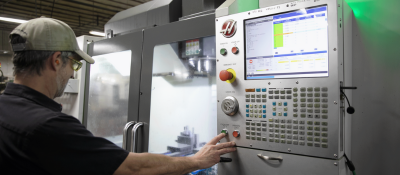Your Cart is Empty

A Local Hospital Consolidates Air System to Lower Costs and Improve Reliability
A local hospital in Utah needed help upgrading their air systems to one centralized system. Rogers Machinery was there to lower costs, increase reliability, simplify the overall system, and meet the NFPA-99 requirements.
While working with a local hospital in Utah, a Rogers Machinery sales engineer discovered that the facility utilized several different compressed air technologies, operated them at different pressures, and were spread in various locations across a very large campus. Rogers Machinery collaborated with the customer to develop a centralized system that would eliminate the reciprocating and scroll compressors and replace the dual tower desiccant dryer along with the old refrigerated dryer. Some of these machines were no longer reliable and had to be replaced with an industrial design that is more durable and has a longer equipment life.
With these different systems operating at a variety of pressures, there were issues arising. Rogers Machinery worked with the customer to perform system energy audits for each system. When performing the energy audit, Rogers was focused on incorporating flowmeters, pressure transducers, and power loggers to gain an understanding of their current demands and usage.
Rogers then worked with the hospital’s energy engineers to outline a demand value that would allow them additional growth and incorporate the use of VFD units to save energy. The hospital was employing a local engineering firm to design the overall system, which included new electrical requirements, NFPA-99 requirements, equipment layout, and selection of equipment, while still complying to Instrument Air System standards.
Their new system now consists of two Rogers KRV-40-150 oil lubricated air compressors with variable frequency drive and GOAT3 panels that incorporate the required controls and alarms to meet NFPA-99. The new compressors also include communication modules for BACNET communication to the hospital’s intranet. Along with the compressors, the system includes a fully lined “wet” receiver, two dual tower Heatless regenerative air dryers with purge control, an integral filtration to meet the stringent requirement of NFPA-99, a fully lined “dry” receiver, and the required pressure regulators and alarm pressure switches.
The new system that they received allowed the hospital to have all its instrument air and lab air to be in one central location, instead of across three different buildings. The results are increased reliability and lowered overall maintenance costs, while simplifying the overall air system.






